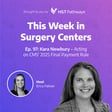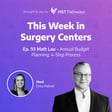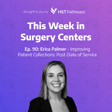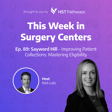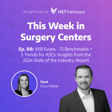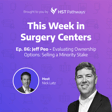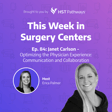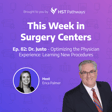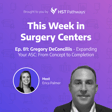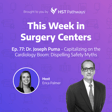
Michael McClain – Expanding Your ASC: Bringing on New Surgeons + Specialties
We have officially wrapped up our "Capitalizing on the Cardiology Boom" series and are starting a new series on "Expanding Your ASC."
Today, I am very excited to have on returning guest, Michael McClain, to discuss how you can successfully bring on new surgeons and add new specialties to your existing facility. Michael is currently the Founder and Managing Member at LeftCoast Healthcare Advisors, so he works with ASCs on their strategic development all the time. He is a wealth of knowledge when it comes to growing and evolving your facility in a seamless and financially beneficial way.
In our news recap, we'll cover the CMS 2025 Proposed Medicare Payment Rule, diversity in the operating room, the Coalition of Health AI, and, of course, end the news segment with a positive story about a nurse who went above and beyond to save a runner's life.
Articles Mentioned:
CMS Releases 2025 Proposed Medicare Payment Rule
Why We Need More Women Surgeons
CHAI releases draft framework for responsible health AI
Nurse Jackie Stange’s Heroic Actions Save Penn State Runner’s Life
Brought to you by HST Pathways.
